The Novel Spectrum Allocation Algorithm in Cognitive Radio System
Xiangqian Che, Yupeng Xie *, Ye Tian , Qijing Zhang, Guizhi Sun
1 School of Computer and Information Engineering & School of Electronics and Information Engineering,Heilongjiang University of Science and Technology, 150022
2 School of Electronics and Information Engineering, Harbin Institute of Technology, Harbin 150080, China
* The Corresponding author: Yupeng Xie, e-mail: xyp1668@163.com
I. INTRODUCTION
As for the distribution of frequency spectrum in a cognitive radio, one of the core factors is that an authorizing user shall not be disturbed and affected by a cognitive user. The literature[1-9] proposed a kind of Greedy Algorithm, it is a method to solve the distribution of frequency spectrum resource and its main thought is shown as follows: A cognitive user is selected according to a randomly determined prioritization, on basis of the expected time occupation length of the cognitive user and different attributes of each channel, the performances of the user in each channel will be judged, the optimum channel will be assigned to the cognitive user and the channel will be removed from the idle channel pool,then the next cognitive user will be selected in turn and the same judgment will be conducted, until all idle channels have been assigned.The algorithm allows for the performances of different cognitive users in the channels with different attributes. When the quantity of idle channels is less than the quantity of the cognitive users, the system tacitly approves that one subchannel can only be assigned to one cognitive user. Though such distribution on frequency spectrum resources facilitates the research on the properties of time domain, it is a little different from the reality. The time domain—frequency domain algorithm on the distribution of frequency spectrum [10-16]discusses the time domain properties of the cavity of frequency spectrum resources, points out that the resource distribution must allow for the conversion relation of the data volume transmitted between time domain and frequency domain.
A novel spectrum allocation algorithm is proposed in this paper in order to reduce the disturbance on an authorizing user and lower the competition between cognitive users.
The contradiction on the aspect of using the cavity of frequency spectrum [17-22] is the conflict between a cognitive user and an authorizing user. In order to assure normal
communication of an authorizing user in its frequency band, when an authorizing user regresses, it is necessary that a cognitive user releases the channel occupied by it and “returns”the channel to the authorizing user. Whereas it is a kind of random behavior that an authorizing user regresses to some frequency band,in addition, when a cognitive user suddenly switches to an idle channel, the performances of the system will be affected in different degrees, therefore, in order that a cognitive user can completely achieve its own communication demand in the frequency spectrum cavity used by it, it is necessary to analyze the state of a channel and its remaining time length.
An idle frequency spectrum is the frequency spectrum cavity generated when it is not used by an authorizing user. A frequency spectrum cavity generally owns three attributes including space domain, frequency domain and time domain, i.e. no authorizing user appears within some region (quantity of cognitive users), in some section of frequency spectrum (some channels) and within some time scope. In the research for the field[23-28], the “space-time-frequency domain”properties of frequency spectrum resource are not paid with enough attention, most of the researches mainly consider how to distribute the quantity of channels or how to distribute different idle channels in respective cognitive users for increasing the throughput of the system. However, if the change properties of an idle frequency spectrum in time domain, the quantity of cognitive users in space domain and the status of idle channels of an authorizing user in the frequency domain are not allowed for, the distributed channels will not be enough to meet the actual demand of cognitive users, the feasibility of the system will be affected. The paper analyzes from the aspect of“space-time-frequency” of a frequency spectrum cavity. The frequency spectrum resources assigned by the Frequency Spectrum Pool Management Center to cognitive users include the quantity of cognitive users, quantity of idle channels and expected time occupation length in a channel, which respectively correspond to the space domain properties, frequency domain properties and time domain properties of a frequency spectrum cavity. From the aspect of space domain, the quantities of cognitive users in different regions are also different,the more the cognitive users, the more intense the competition. For those cognitive users favorable for the system to achieve its utility goal, the frequency spectrum pool will provide preferential distribution. From the aspect of frequency domain, for the quantity of the available idle channels in a cognitive radio system, partial cognitive users may not attain any channels in some resource distribution.For those cognitive users favorable for the system to achieve its utility goal, the frequency spectrum pool will provide preferential distribution. From the aspect of time domain,the occupied time of the idle channels assigned by the system to a main user belongs to the expected value, the larger the value of the expected time occupation length of a user, the larger the possibility that a conflict occurs. On basis of the principle of avoiding conflict and reducing loss, the expected time occupation length assigned to a cognitive user shall be reduced as far as feasible.
The paper firstly introduces the relevant research on the greedy algorithm and time domain—frequency domain algorithm in the distribution of frequency spectrum, Section 2 gives a description on reliability theory,the analysis is carried out from the aspect of the novel spectrum allocation of frequency spectrum cavity; Section 3 of the paper gives the process of the novel spectrum allocation frequency spectrum distribution algorithm;Section 3.1 analyzes the combined space domain—time domain—frequency domain algorithm; Section 3.2 details the steps on the novel spectrum allocation frequency spectrum distribution algorithm; Section 4 simulates and analyzes the novel spectrum allocation frequency spectrum distribution algorithm. Finally, the conclusion of the paper is given.
II. DESCRIPTION ON RELIABILITY THEORY
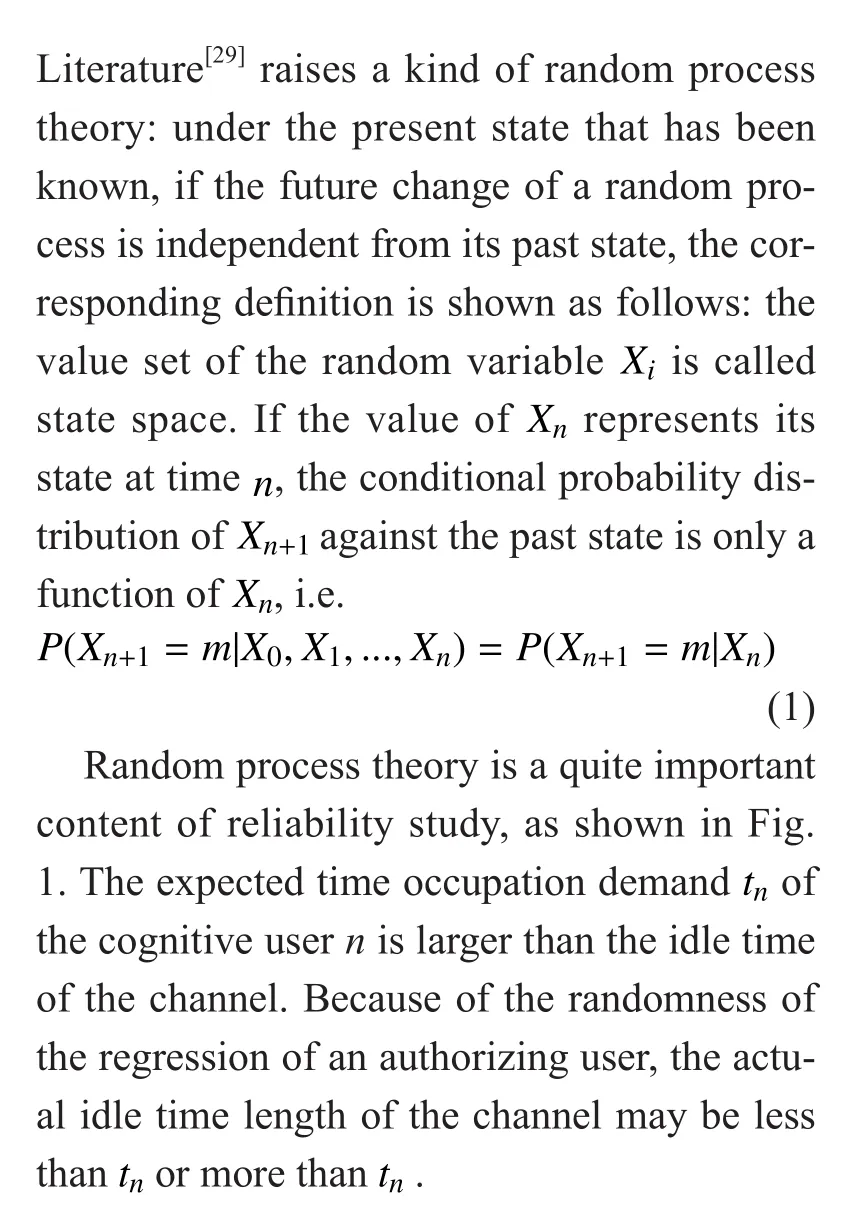
When the transmission speed and transmission data of a cognitive user are known, the frequency spectrum pool can assign a cognitive user with proper quantity of channels and expected time occupation length, this can not only meet the data transmission demand of a cognitive user, but also lower time domain conflict as far as possible, as shown in Fig. 2.
However, in most of the present researches for the field, the “space-time-frequency”properties of frequency spectrum resource are not paid with enough attention. If the change properties of an idle frequency spectrum in time domain and space domain are not allowed for, it is not sure that the above distributed channels will meet the actual demand of cognitive users, the feasibility of the system optimization will be further affected.
Therefore, the paper gives a hypothesis from the aspect of “space-time-frequency” of frequency spectrum cavity:
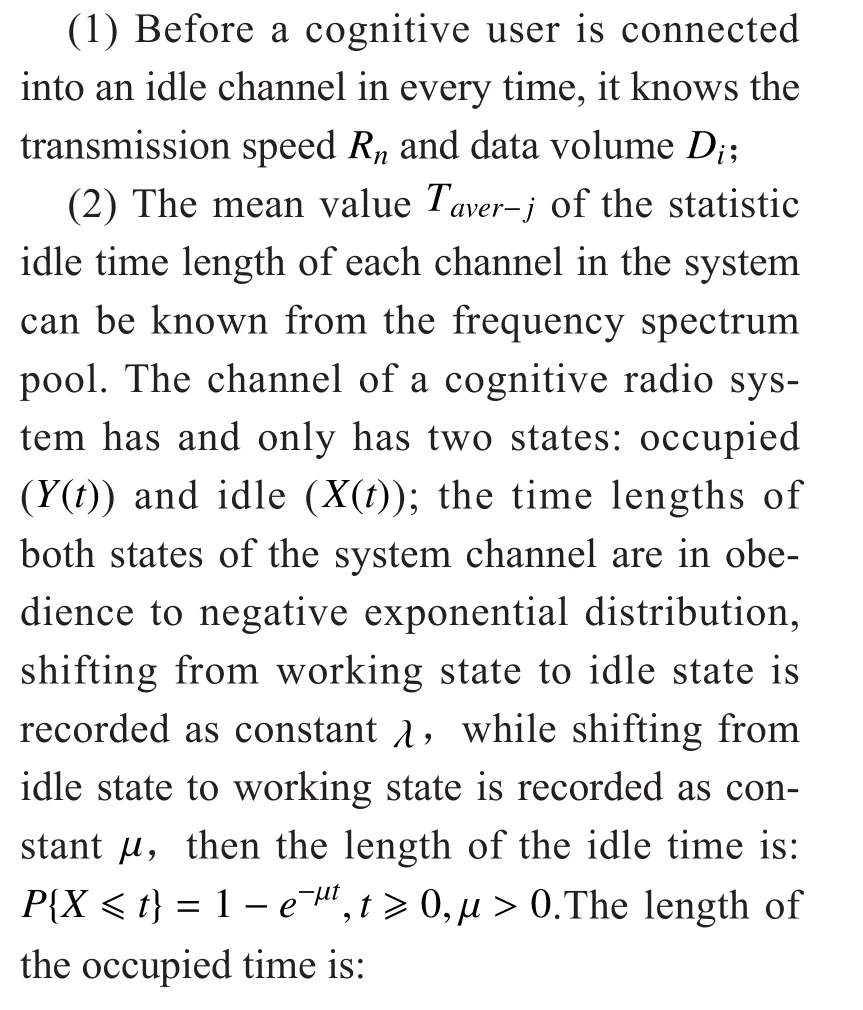
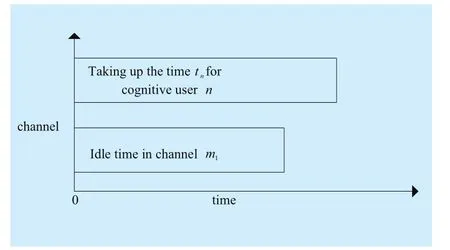
Fig. 1 Relationship between taking up the time for cognitive users and the average amount of idle time in channel
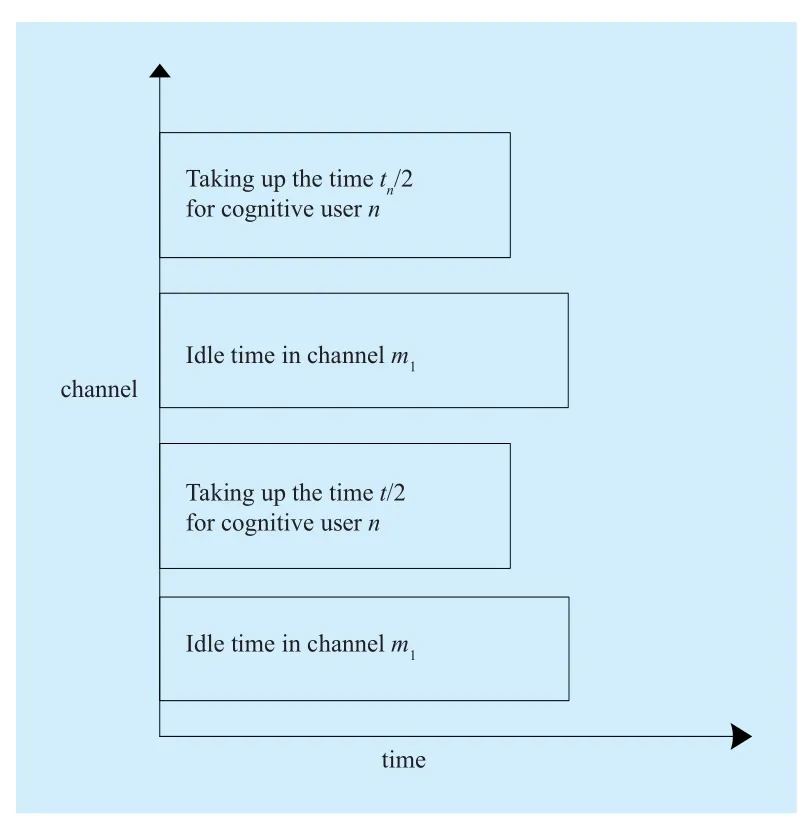
Fig. 2 Increasing channel allocated and reducing the time took up

(3) The cognitive users in different channels will not be mutually affected, that is to say, the transmitted power of a cognitive user will not be restricted.
On the basis of above three hypotheses,the frequency spectrum resource distribution algorithm novel spectrum allocation is given below, the feasibility of the algorithm will be discussed and a simulative analysis will be provided.
III. THREE DIMENSIONAL JOINT ALGORITHM
The shift probability between the “Occupied”state and the “Idle” state in a cognitive system is:
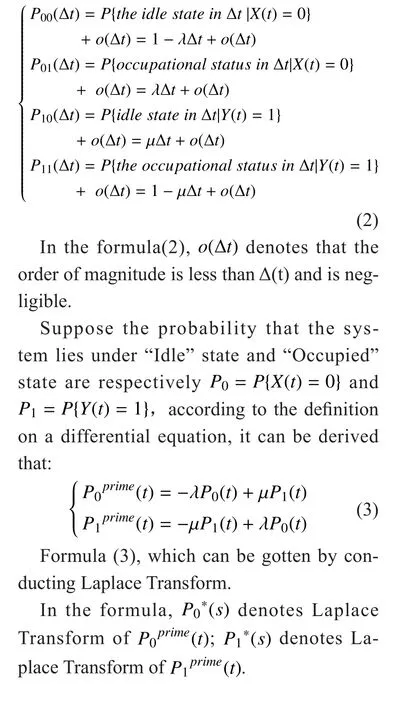
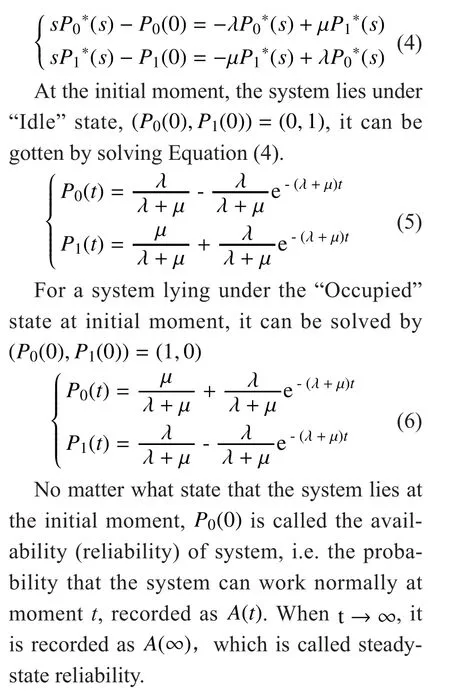
In order to get a probability that a cognitive user completely attains to use an idle channel during a period T, the theory of “Task availability” in the reliability theory is applied.Task availability is just the probability that the system lies under normal state all along within a period

When space domain, time domain and frequency domain are used for simultaneous consideration, it can be found that space domain (quantity of cognitive users), frequency(bandwidth) and time domain (length of transmission time) are correlated, i.e. under the condition that the data volume demanded by a cognitive user is known, according to Shannon’s Theorem, it can be gotten that,
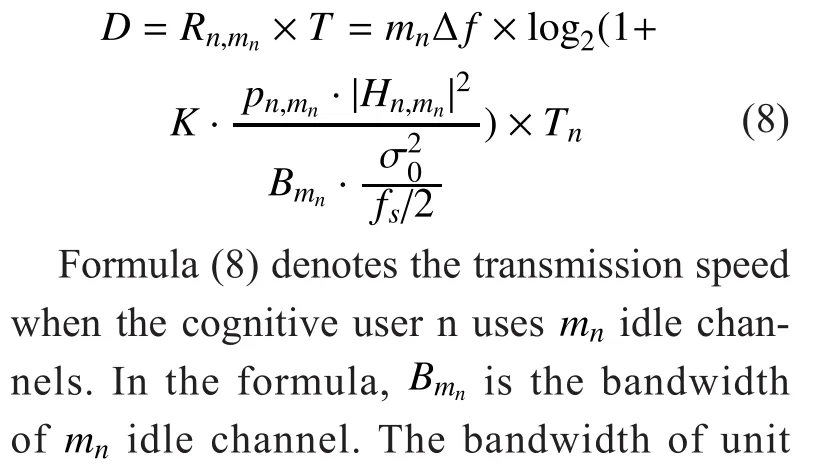
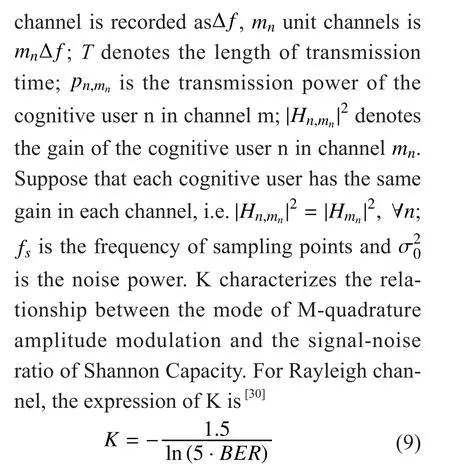
In the formula (9), BER denotes the bit error rate.
According to the above mentioned relationship among space domain, time domain and frequency domain, the paper raises an algorithm novel spectrum allocation . Under the condition that the demand volume and the transmission speed are definite, by increasing the quantity of channels or the length of the expected occupation time, the target utility of the system applying the novel spectrum allocation can be increased.
3.1 Analysis on the algorithm in the paper

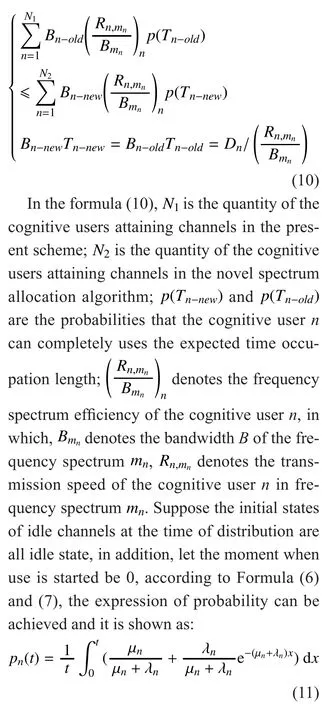
Formula (10) denotes the utility of the system and the target is the maximum total throughput. On basis of the effect of the probability of the expected time occupation length and the quantity of channels on the throughput, two kinds of methods can be applied to increase the throughput, one is to increase time occupation length and reduce quantity of channel; the other method is to reduce time occupation length and increase quantity of channel.
3.2 Steps on the frequency spectrum distribution algorithm
The novel spectrum allocation in the paper:Firstly sort the cognitive users in a descending order as per their transmission speed,then select cognitive users in turn according to the sequence from large to small, judge if the throughput of the system itself will be increased or not by predistribution after the system has assigned resources to a new cognitive user, if the throughput increases, the system will con firm to assign corresponding resources to the new cognitive user, subsequently, the system will continue to judge the next cognitive user, conversely, it will be deemed that the total utility of the system has reached the limit. The concrete step is shown as follows:
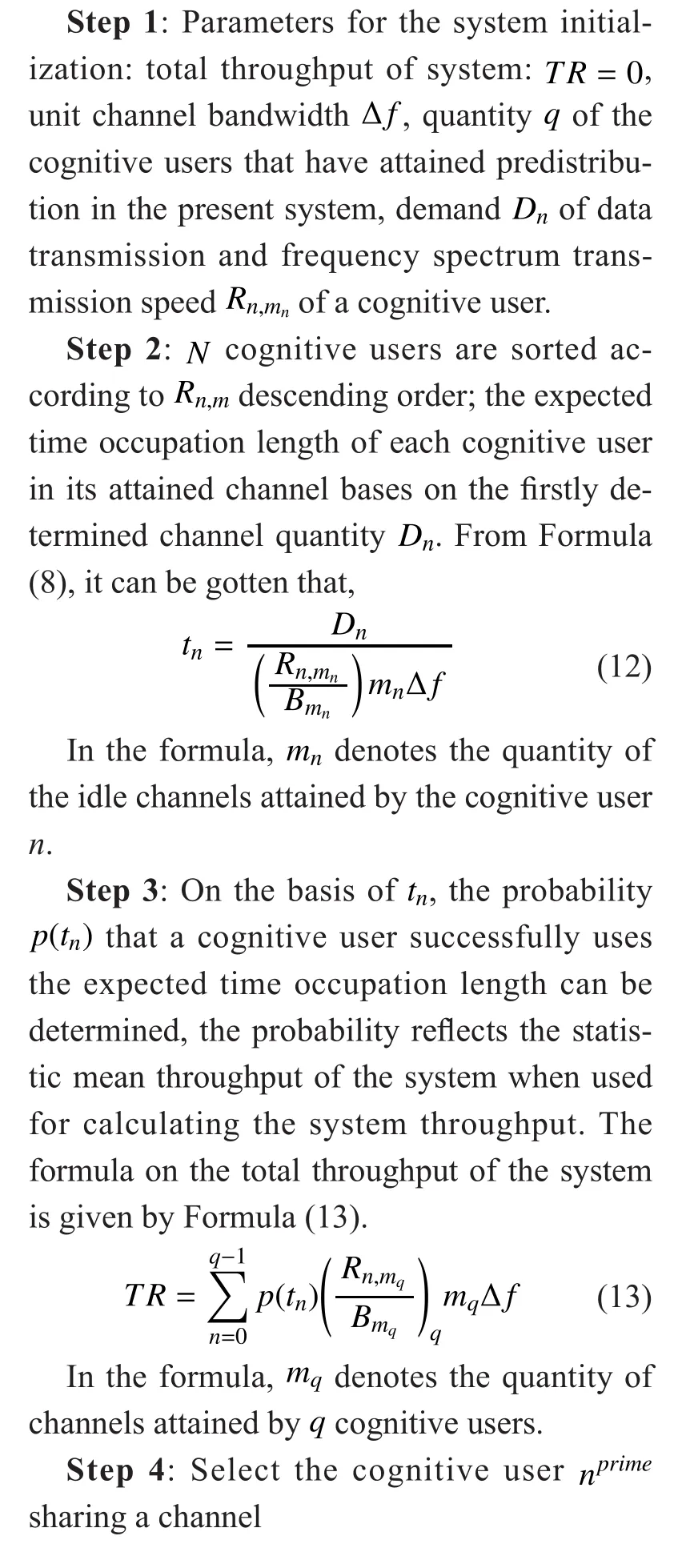
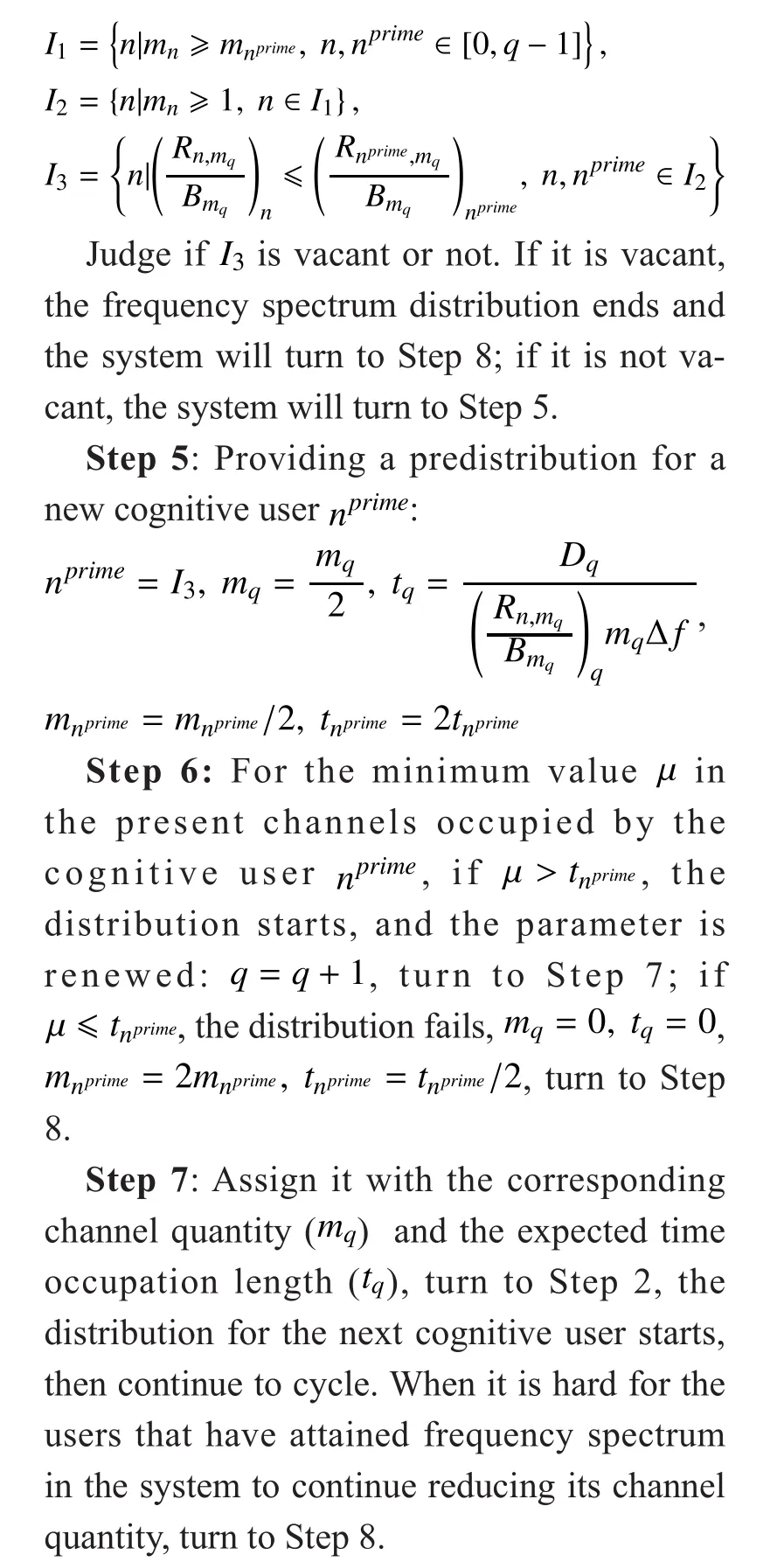
Step 8: The allocation ends.
In a word, the combined algorithm in the paper simultaneously allows for the quantity of idle frequency spectra in space domain,competition relationship among different cognitive users in frequency domain and the possible conflict between a cognitive user and an authorizing user in time domain, thereby the conflict probability is integrated into the calculation on the total system utility and the analysis on the cognitive system becomes more true.
IV. SIMULATIVE RESULT OF THE ALGORITHM AND ANALYSIS
Below the algorithm in the paper is com-
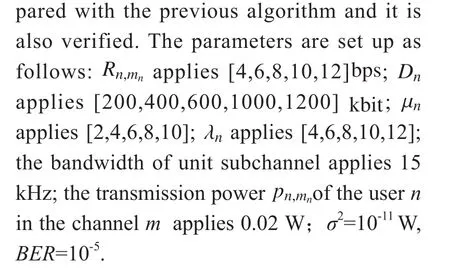
In view of the change characteristics of a frequency spectrum cavity, Fig. 3 shows that,when the quantity of the main users is28, the transmissible data volume of the system in the novel spectrum allocation algorithm, time domain—frequency domain algorithm and greedy algorithm are compared, the quantity of the cognitive users ranges from 5 to 25,without loss of generality, the transmissible data volume rises following the increase of the quantity of the cognitive users. The performance of the novel spectrum allocation algorithm is the best, superior to time domain—frequency domain algorithm and greedy algorithm. In time domain-frequency domain algorithm and greedy algorithm, a kind of priority of the channel is randomly determined,then the frequency spectrum is distributed.However, in the novel spectrum allocation algorithm, the priority of the transmission speed is applied for the optimum distribution.
According to Fig. 4, when the quantity of the cognitive users is 30, the quantity of the authorizing users range from 10 to 30, without loss of generality. The trend of the transmissible data volume in the novel spectrum allocation algorithm, time domain—frequency domain algorithm and greedy algorithm are all as follows: firstly rises following the increase of idle authorizing users. The performance of the novel spectrum allocation algorithm is the best, the performance of time domain—frequency domain algorithm and the performance of greedy algorithm are approximate.The essence of time domain—frequency domain algorithm and greedy algorithm are all randomly pairing between idle channels and cognitive users, they all fail to allow for the change on the aspect of the quantity of idle channels of the authorizing users in space domain, while the concept of the novel spectrum allocation algorithm is to weigh from three aspects including space, time domain and frequency domain.
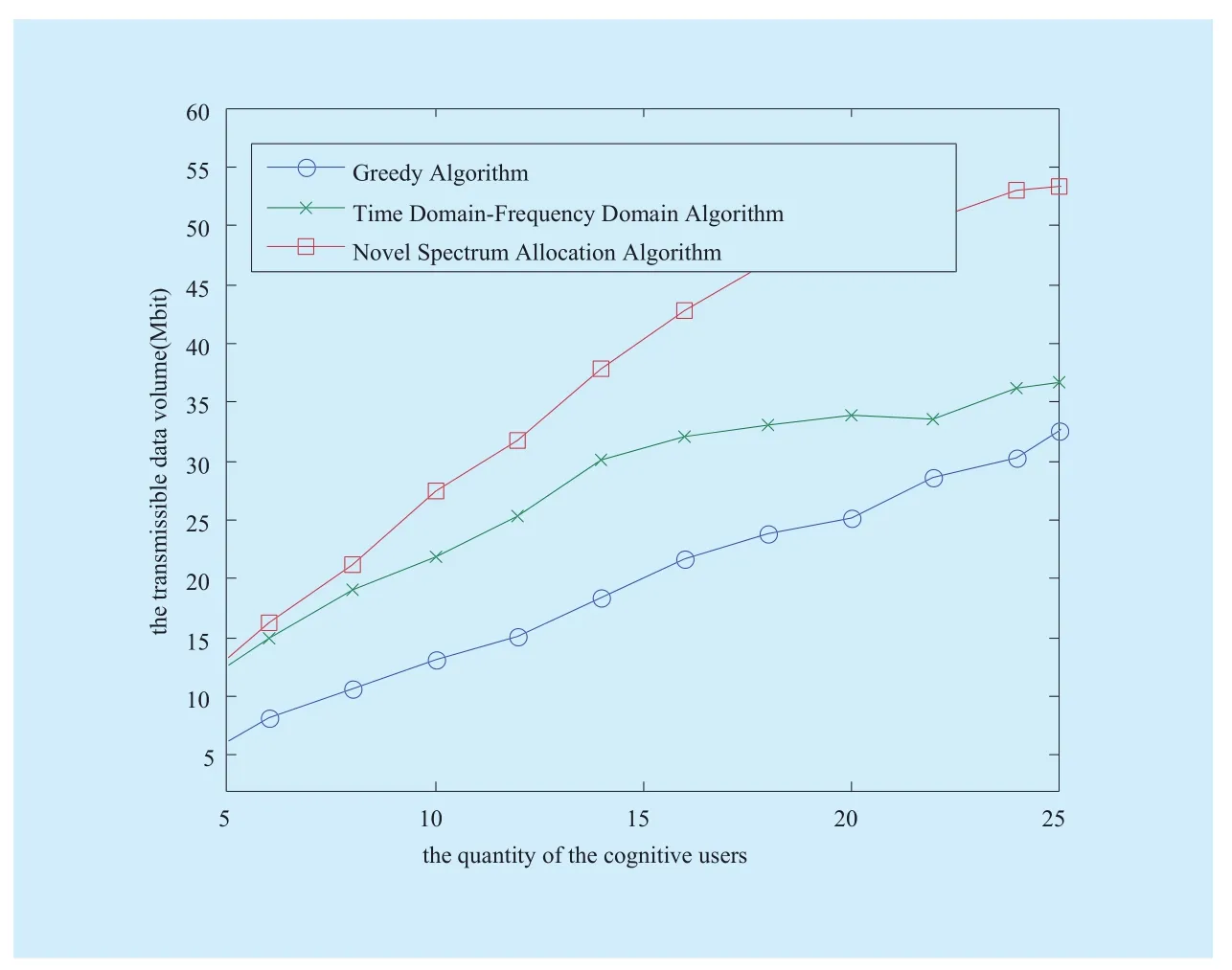
Fig. 3 Relationship between transmission data capacity and cognitive users
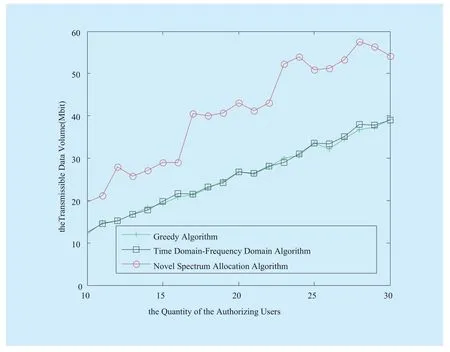
Fig. 4 Relationship between transmission data capacity and idle authorized users
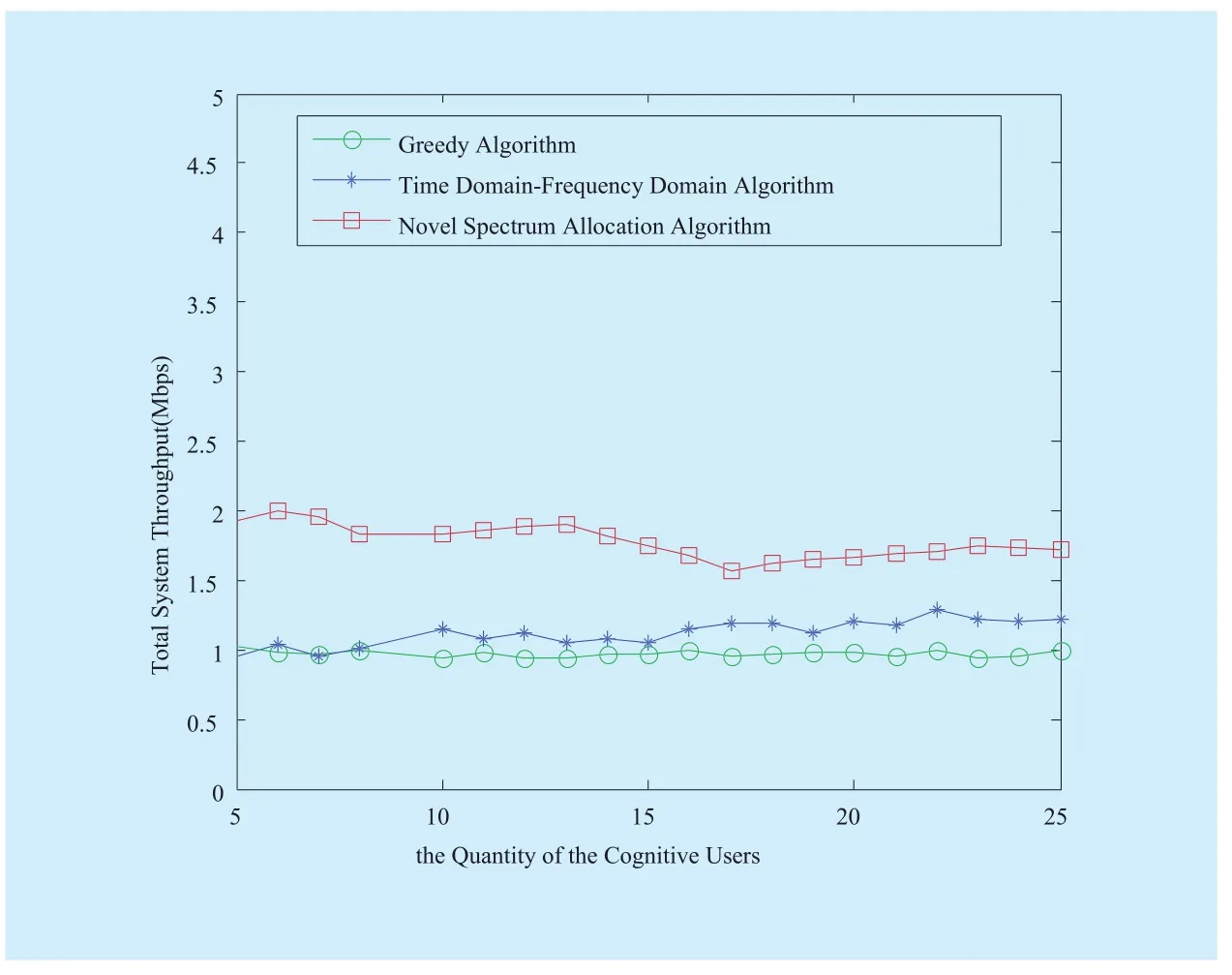
Fig. 5 Relationship between total system throughput and cognitive users
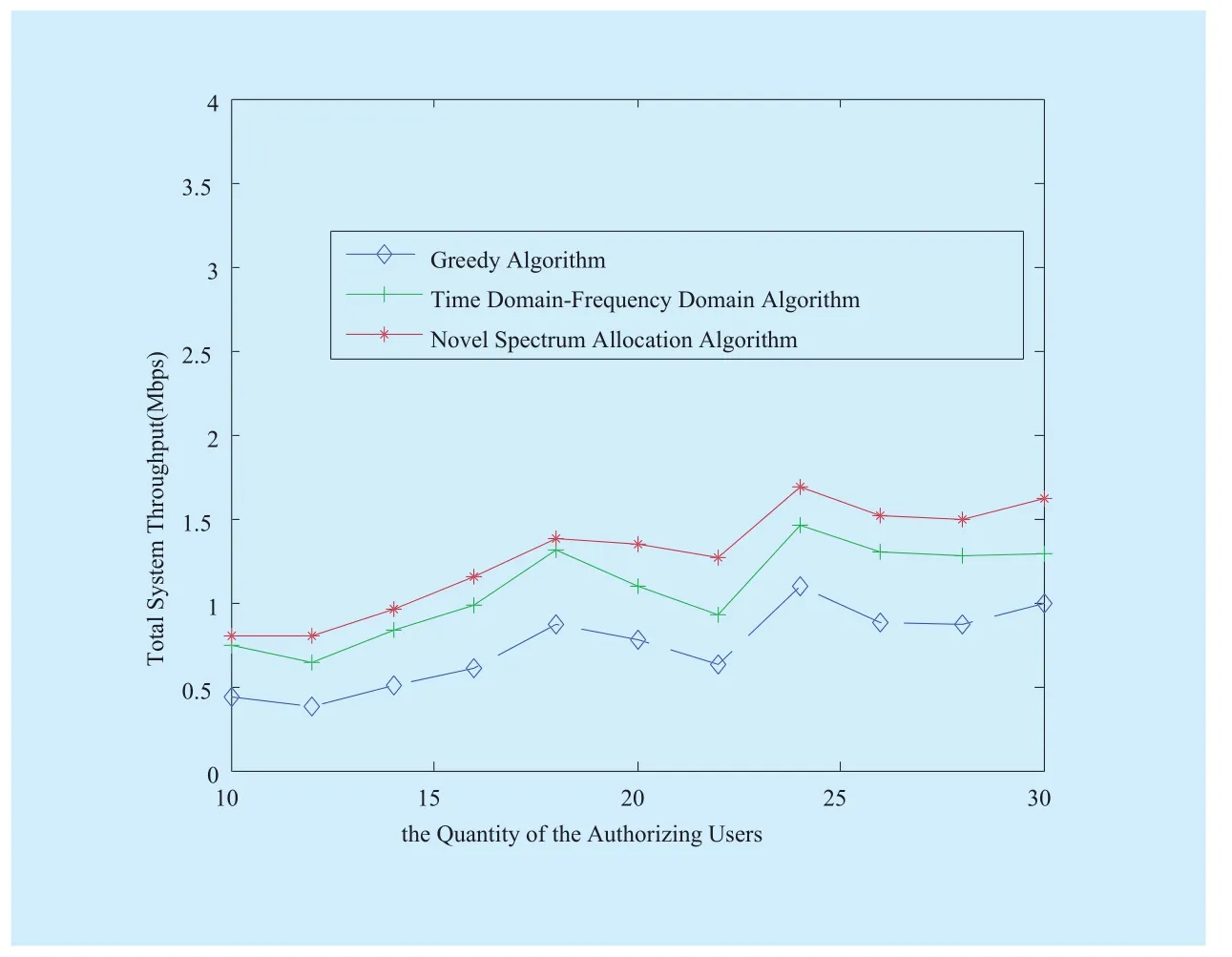
Fig. 6 Relationship between total system throughput and idle authorized users
The total throughput of the system is applied to assess the performances of three algorithms. According to Fig. 5, the performance curve is not smooth, but fluctuated. This is because the data selected in the paper for the simulation is achieved according to a specified value scope, however, this will not affect the trends and law characteristics of the performance parameters.
When the quantity of the idle channels of the main users is 30, the quantity of the cognitive users ranges from 5 to 25, without loss of generality. According to Fig. 5, following the increase of the cognitive users, the total throughput of the system in the novel spectrum allocation algorithm is apparently superior to the other two algorithms. When the quantity of the cognitive users is small,the competition among the cognitive users in frequency domain is not intense, therefore,the probability that the idle resources are distributed to the cognitive users is large. Following the increase of the cognitive users, the competition becomes intense, therefore, the throughput performance will decrease. When the idle resources are just distributed to the cognitive users, the throughput is large, or else the throughout is small.
When the quantity of the cognitive users is 16, the quantity of the main users ranges from 10 to 30, without loss of generality. According to Fig. 6, the trend of the transmissible data volume in the novel spectrum allocation algorithm, time domain—frequency domain algorithm and greedy algorithm are all as follows:firstly rises following the increase of the quantity of the idle main users.The novel spectrum allocation algorithm is superior to time domain—frequency domain algorithm and greedy algorithm. By analysis, the reason is shown as follows: For greedy algorithm, idle channels and cognitive users are only paired randomly in time domain; for time domain—frequency domain algorithm, it only allows for the optimization between idle channels and cognitive users from the aspects of time and frequency domain. Both algorithms fail to allow for the change of idle channels in space domain. For the novel spectrum allocation algorithm, the channels are optimized jointly from three aspects including space, time domain and frequency domain, the system conflict is reduced and the optimum system performance will be realized.
V. CONCLUSIONS
Firstly, the paper discusses the time frequency, space properties and frequency domain properties of the frequency spectrum resource cavity, points out that the three properties must be allowed for in resource distribution, raises the novel spectrum allocation algorithm. It has considered the quantity of users in space and the quantity of the idle channels of the main users, the probable conflict between the cognitive users and the main users in time domain,the competition among different cognitive users in frequency domain. In addition, the paper describes the total utility gain of the system by randomized calculation. Finally, the paper carries out comparative simulation and analysis for the novel spectrum allocation algorithm,time domain—frequency domain algorithm and greedy algorithm raised from the aspect of the target performance of system utility, verifies that novel spectrum allocation algorithm has a high total system throughput and a high data transmission volume.
ACKNOWLEDGMENT
The authors would like to thank the editor and the reviewers whose constructive comments have helped to improve the presentation of this paper. The work was supported by Natural Science Foundation of Heilongjiang Province of China(No.F2015017)
[1] J. Wang, S. L. Yao, D. W. Chu, et al, “Connectivity of spectrum holes and latency of waiting for a spectrum hole in cognitive radio networks”,International Review on Computers and Software,vol.7, no. 5, pp. 2650-2654, 2012.
[2] S. Singh, P. D. Teal, P. “A. Dmochowski. Interference Management in Cognitive Radio Systems with Feasibility Detection”,IEEE Transactions on Vehicular Technology, Vol.62, no. 8, pp. 3711-3720, 2013.
[3] D. M. Kalathil, R. Jain. “Spectrum Sharing through Contracts for Cognitive Radios”,IEEE Transactions on Mobile Computing,vol.12, no.10, pp. 1999-2011, 2013.
[4] W. D. Wang, S. F. Mo, F. Li, et al. “Spectrum allocation based on the time-varying characteristic of the spectrum holes in cognitive radio”,IET Conference Publications, 2010 International Conference on Advanced Intelligence and Awareness Internet, AIAI 2010, pp. 241-245,2010.
[5] K. W. Choi, W. S. Jeon, D. G. Jeong. “Adaptive and distributed access to spectrum holes in cognitive radio system”,Wireless Personal Com-munications, vol.70,no.1,pp.207-226,2013.
[6] Y. L. Zou, Y. D. Yao, B.Y. Zheng. “Cooperative relay techniques for cognitive radio systems:Spectrum sensing and secondary user transmissions”,IEEE Communications Magazine,vol.50,no.4,pp. 98-103,2012.
[7] S. J. Xie, W. W. Xia, L. F. Shen.”A spectrum hole detection mechanism in cognitive radio networks applied in typical scenarios”,Journal of Southeast University(English Edition),vol.28,no.4,pp.380-385,2012.
[8] M. Song, C. S. Xin, Y. X. Zhao, X. Z. Cheng.”Dynamic spectrum access: From cognitive radio to network radio”,IEEE Wireless Communications,vol.19,no,1,pp.23-29,2012.
[9] C. B. Xu, Y. Zhao, C.L. Yang, Y. J. Xian. “Performance analysis of dynamic spectrum access and a new admission control mechanism in cognitive radio networks”,Journal of Computational Information Systems,vol.9,no,6,pp.2139-2148,2013.
[10] V. K. Tumuluru, P. Wang, D. Niyato. “Channel status prediction for cognitive radio networks”,Wireless Communications and Mobile Computing, vol.12,no.10,pp.862-874,2012.
[11] L. T. Tan, L. B. Le. “Channel assignment with access contention resolution for cognitive radio networks”,IEEE Transactions on Vehicular Technology, vol. 61, no.6, pp. 2808-2823, 2012.
[12] B. Bai, W. Chen, Z. G. Cao. “Low-Complexity Hierarchical Spectrum Sharing Scheme in Cognitive Radio Networks”,IEEE Communications Letters. Vol.13,no.10,pp.770-772,2009.
[13] Q. Q. Pei, H. N. Li, H. Y. Zhao, et al. “Security in cognitive radio networks”,Tongxin Xuebao/Journal on Communications,vol.34,no.1,pp. 144-158,2013.
[14] T. Xue, Y.Shi, X. D. Dong. “A framework for location-aware strategies in cognitive radio systems”,IEEE Wireless Communications Letters,vol.1,no.1, pp. 30-33,2012.
[15] W. F. Su, J. D. Matyjas, S. Batalama. “Active cooperation between primary users and cognitive radio users in heterogeneous ad-hoc networks”,IEEE Transactions on Signal Processing,vol.60,no.4,pp.1796-1805,2012.
[16] H. K. Park. “Channel Selection Scheme using Statistical Properties in the Cognitive Radio Networks”,Transactions of the Korean Institute of Electrical Engineers, 2011,60(9):1767-1769.
[17] M. Kazemi, B.Mahboobi, M. Ardebilipour. “Performance analysis of simultaneous location and power estimation using WLS method for cognitive radio”,IEEE Communications Letters,vol.15,no.10,pp.062-1064,2011.
[18] T. Bansal, D. Li, P. Sinha.”Opportunistic Channel Sharing in Cognitive Radio Networks”,IEEE Transactions on Mobile Computing,vol.13,no.4,pp.852-865,2014.
[19] I. Kim, D.W. Kim. “Optimal incentive design for collaborative primary-secondary transmission with primary data-rate constraints”,IET Communications, vol.7,no.17,pp.1993-2003,2013.
[20] G. P. Zhang, K. Yang, J. L. Song. “Fair and Efficient Spectrum Splitting for Unlicensed Secondary Users in Cooperative Cognitive Radio Networks”,Wireless Personal Communications,vol.71,no.1,pp.299-316,2013.
[21] L. Ding, K. K. Gao, T. Melodia. “All-Spectrum Cognitive Networking through Joint Distributed Channelization and Routing”,IEEE Transactions on Wireless Communications,vol.12,no.11,pp.5394-5405,2013.
[22] W. S. Yin, P. Y. Ren, F. Li. Joint Sensing and Transmission for AF Relay Assisted PU Transmission in Cognitive Radio Networks”,IEEE Journal on Selected Areas in Communications,vol.31,no.11,pp.2249-2261,2013.
[23] S. W. Wang, M. Y. Ge, C. G. Wang. “Efficient Resource Allocation for Cognitive Radio Networks with Cooperative Relays”,IEEE Journal on Selected Areas in Communications,vol.31.no.11,pp.2432-2441 ,2013.
[24] H. Z. Zhang, Z. Y. Zhang, H. Y. Dai. “On the Capacity Region of Cognitive Multiple Access over White Space Channels”,IEEE Journal on Selected Areas in Communications, 2013, 31(11):2517-2527.
[25] X.D. Xiang, J.X. Wan, C. Lin.”A dynamic programming approximation for downlink channel allocation in cognitive femtocell networks”,Computer Networks,vol.31.no.11,pp.2976-2991,2013.
[26] Y. Wang, Z. Z. Zhang. Q. Y. Yu. “A Novel Prediction-based Spectrum Allocation Mechanism for Mobile Cognitive Radio Networks”,KSII Transactions on Internet and Information Systems,vol.7,no.9,pp.2101-2119,2013.
[27] M. G. Adian, H. Aghaeinia. “Optimal resource allocation for opportunistic spectrum access in multiple-input multiple-output -orthogonal frequency division multiplexing based cooperative cognitive radio networks”,IET SIGNAL PROCESSING, vol.7, no.7, pp.549-557, 2013.
[28] Y. H. Xu, Q. H. Wu, J. L. Wang.”Opportunistic Spectrum Access Using Partially Overlapping Channels: Graphical Game and Uncoupled Learning “,IEEE Transactions on Communications,vol. 61, no. 9, pp. 3906-3918, 2013.
[29] O. B. Abdul-Ghafoor, I. Mahamod, R. Nordin.“Resource Allocation in Spectrum Sharing adhoc Cognitive Radio Networks Based on Game Theory: An Overview”,KSII Transactions on Internet and Information Systems,vol.7, no.12,pp.2957-2986, 2013.
[30] Y. T. Ma, L. J. Zhou, K. Liu. “A Subcarrier-Pair Based Resource Allocation Scheme Using Proportional Fairness for Cooperative OFDM-Based Cognitive Radio Networks “,SENSORS, vol.13,no.8, pp.10306-10332, 2013.
- China Communications的其它文章
- Adaptive Application Offloading Decision and Transmission Scheduling for Mobile Cloud Computing
- Multi-Gradient Routing Protocol for Wireless Sensor Networks
- Smart Service System(SSS): A Novel Architecture Enabling Coordination of Heterogeneous Networking Technologies and Devices for Internet of Things
- Efficient XML Query and Update Processing Using A Novel Prime-Based Middle Fraction Labeling Scheme
- Degree-Based Probabilistic Caching in Content-Centric Networking
- Direction of Arrivals Estimation for Correlated Broadband Radio Signals by MVDR Algorithm Using Wavelet

